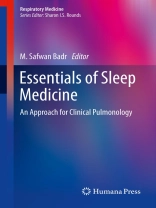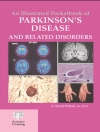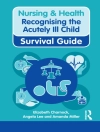Sleep disorders represent a major portion of the chief complaints seen by pulmonologists and other physicians. Sleep apnea and hypopnea syndrome for example, are common disorders with significant adverse health consequences. Sleep apnea is associated with increased cardiovascular mortality, impaired quality of life and increased motor vehicle accidents. In addition, sleep apnea often co-exists with other chronic conditions including obesity, the metabolic syndrome, and tobacco use disorder. Patients with sleep-related conditions often present with non-specific complaints that require a broad and detailed knowledge of the wide range of sleep disorders.
In Essentials of Sleep Medicine: An Approach for Clinical Pulmonology, a concise, evidence-based review of sleep medicine for the pulmonologist is presented. Providing a focused, scientific basis for the effects of sleep on human physiology, especially cardiac and respiratory physiology, chapters also outline a differential diagnosis for common sleep complaints and an evidence-based approach to diagnosis and management. This includes a review of the current standards of practice and of emerging technology and unresolved issues awaiting further research. Each chapter includes a summary of current research and outlines future research directions and issues. In all, Essentials of Sleep Medicine: An Approach for Clinical Pulmonology provides a clear diagnostic and management program for all the different sleep disorders, with a major focus on respiratory disorders of sleep, and includes key points and summaries. Developed by an international group of renowned authors, Essentials of Sleep Medicine: An Approach for Clinical Pulmonology is an invaluable resource for pulmonologists, respiratory care practitioners, polysomnographictechnologists, graduate students, clinical researchers, and other health professionals seeking an in-depth review of sleep medicine.
Daftar Isi
Normal Sleep.- Pharmacology of Sleep.- Obstructive Sleep Apnea: Diagnosis with Polysomnography and Portable Monitors.- Approach to Hypersomnia.- Obstructive Sleep Apnea: Epidemiology of Sleep Apnea.- Obstructive Sleep Apnea: Clinical features and adverse consequences.- Assessments of Driving Risk in Sleep Apnea.- Nasal Continuous Positive Airway Pressure (CPAP) Treatment.- Obstructive Sleep Apnea: Oral Appliances.- Obstructive Sleep Apnea: Surgery.- Sleep and Lung Disease.- Central Sleep Apnea.- Insomnia: Etiology, Clinical Manifestations, and Morbidity.- Management of Insomnia for the Pulmonologist.- Circadian Disorders for the Pulmonologist.- Narcolepsy and Idiopathic Hypersomnia.- Parasomnias.- Movement Disorders for the Pulmonologist.- Perioperative Care of Patients with Obstructive Sleep Apnea Syndrome.- Sleep and Critical Illness.












